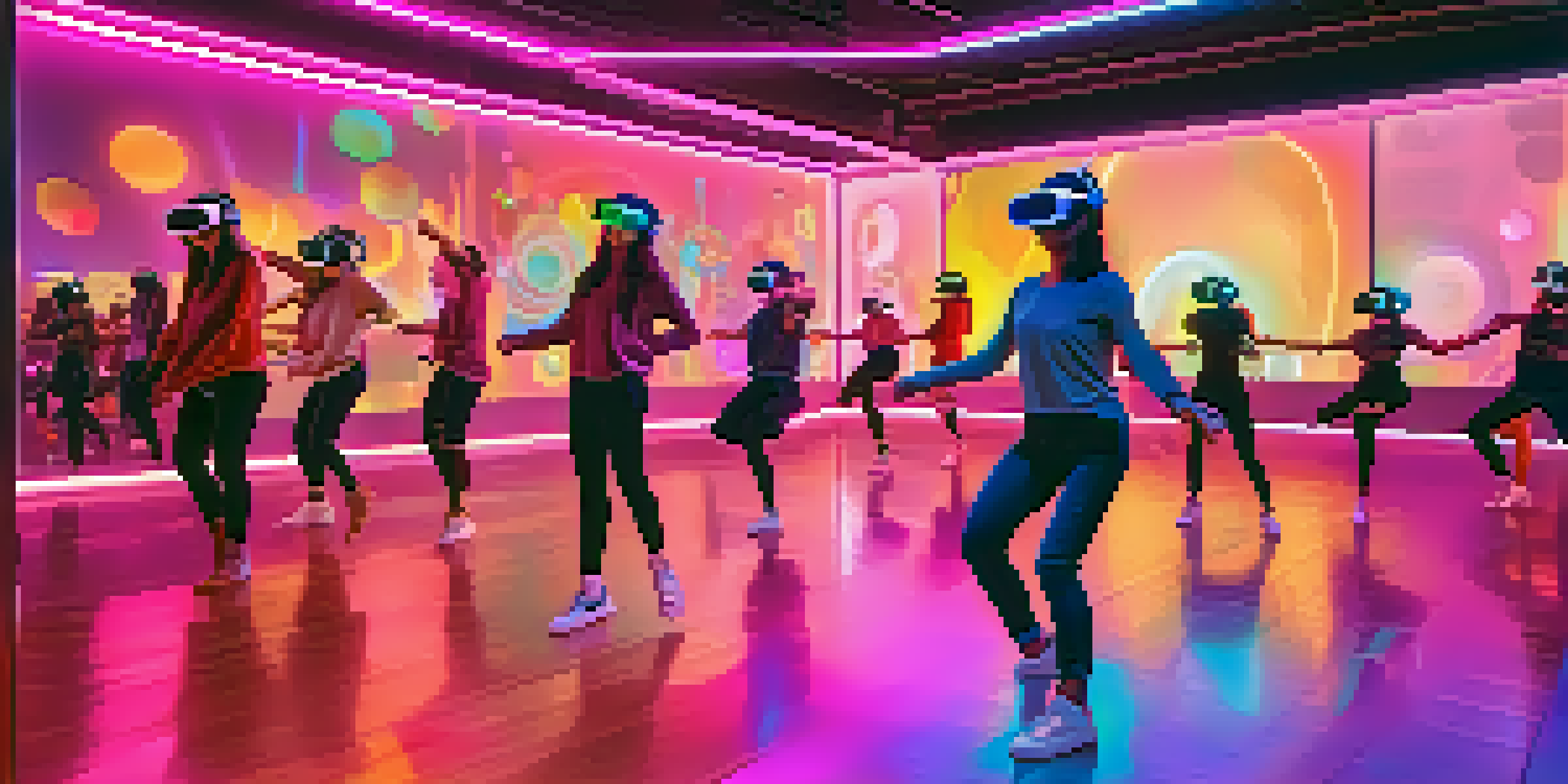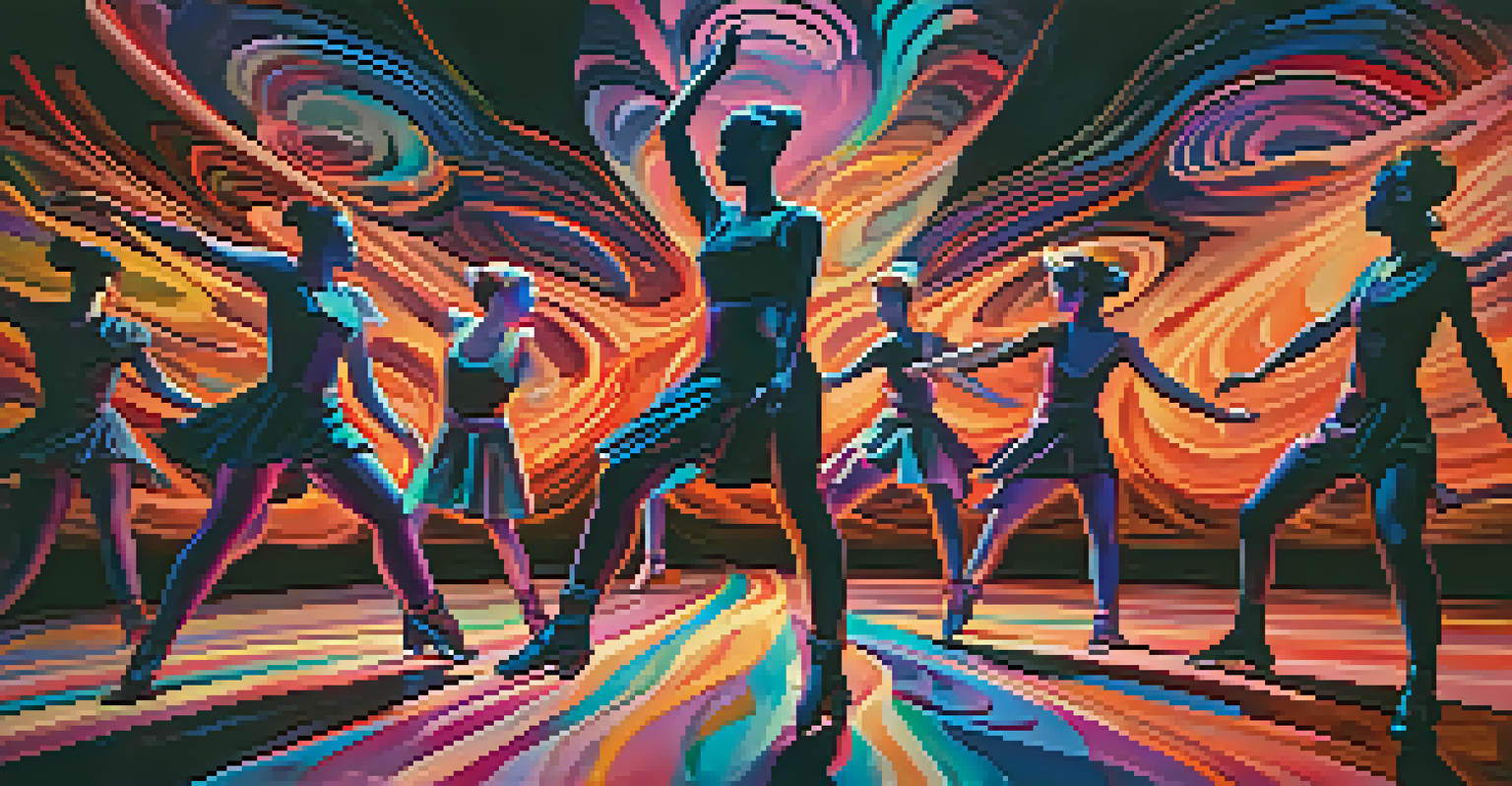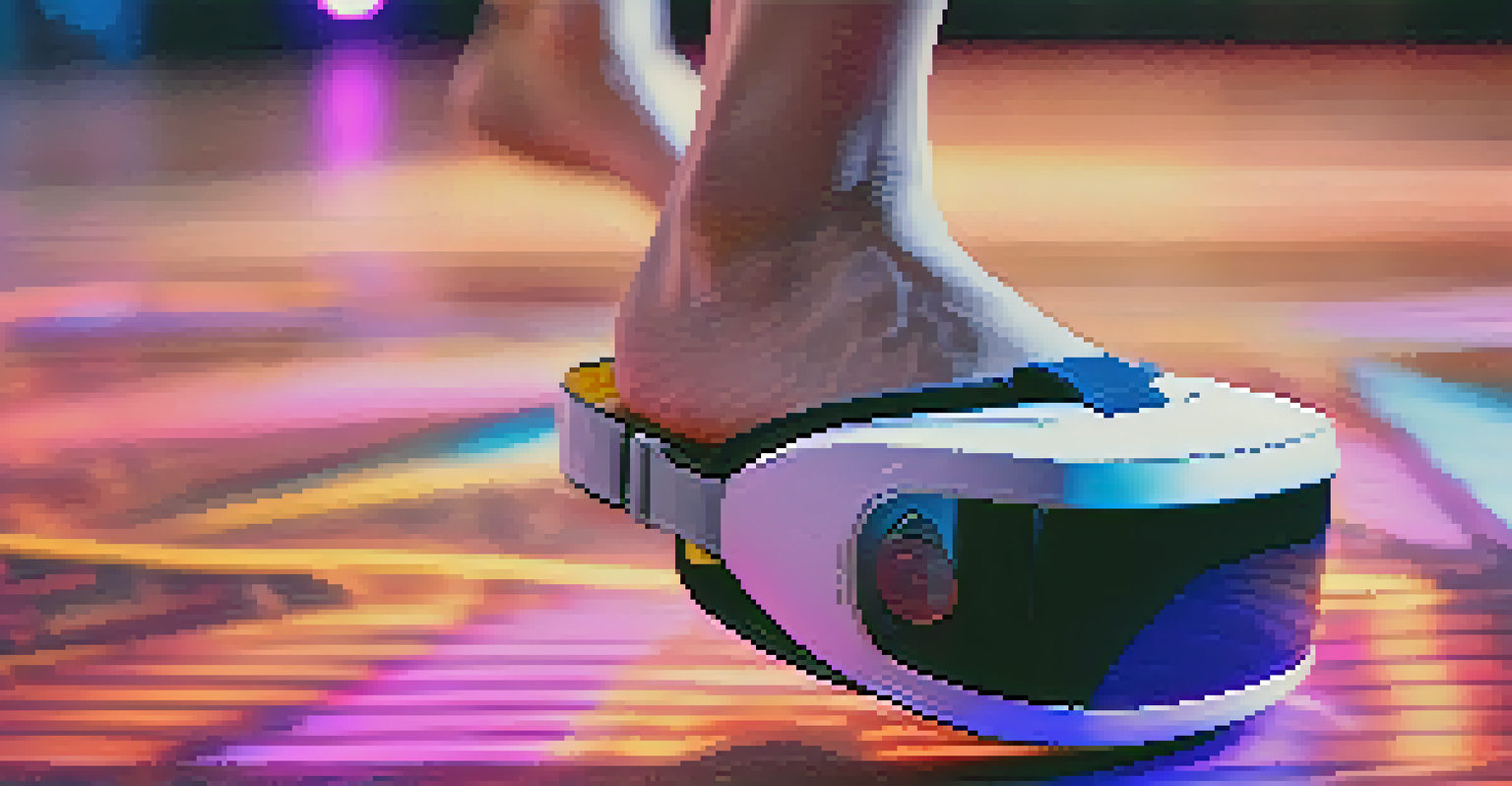The Future of Dance: Merging Virtual Reality and Performance Art

Understanding Virtual Reality in Dance Performance
Virtual reality (VR) has emerged as a groundbreaking tool in the world of dance, offering artists new ways to engage with their audience. By immersing viewers in a 360-degree experience, VR breaks the traditional boundaries of performance spaces. Dancers can now choreograph experiences that transport audiences to fantastical worlds, enhancing storytelling and emotional connection.
Virtual reality is a new medium to explore the depths of our imagination and creativity.
Imagine attending a dance performance where you're not just a spectator but part of the narrative. VR allows for this unique interaction, inviting viewers to explore different perspectives and even participate in the performance. This shift from passive watching to active engagement can transform how we perceive and appreciate dance.
Furthermore, VR technology can assist choreographers in visualizing complex movements in a virtual space. This means they can experiment with dance routines and staging without the constraints of a physical venue, ultimately leading to more innovative and captivating performances.
The Rise of Virtual Dance Studios
With the COVID-19 pandemic pushing many activities online, virtual dance studios have surged in popularity. These platforms not only allow dancers to take classes from the comfort of their homes but also provide access to instructors worldwide. This democratization of dance education fosters a global community where diverse styles and techniques can flourish.

Through VR, these online studios can create immersive environments that mimic real-life dance spaces, enhancing the learning experience. Students can practice alongside their peers in a virtual studio, feeling the collective energy that often inspires creativity and motivation. It's like having a dance party, but without the need for physical proximity.
VR Transforms Dance Engagement
Virtual reality allows audiences to actively participate in dance performances, shifting from passive viewers to interactive participants.
Moreover, the flexibility of virtual studios means that people of all skill levels, regardless of location, can find a class that fits their needs. This accessibility not only broadens participation in dance but also nurtures a richer tapestry of movement styles and cultural expressions.
Enhancing Creativity through VR Technology
One of the most exciting aspects of merging VR with dance is the potential for creative exploration. Choreographers can design entire worlds to accompany their pieces, integrating visual effects and soundscapes that enhance the emotional impact of their performances. This fusion of art forms allows for a more holistic approach to dance, where movement is only one part of the experience.
Technology is an enabler of creativity, allowing us to push the boundaries of what is possible in art and performance.
Additionally, VR can facilitate collaboration among artists from different disciplines. For instance, a dancer might work with a visual artist and a sound designer to co-create a piece that blends their unique talents. This interdisciplinary approach not only pushes creative boundaries but also leads to innovative performances that captivate audiences.
As technology continues to evolve, we can expect even more sophisticated tools that will further enhance artistic expression. The possibilities are endless, and the future of dance could be filled with experiences we can only dream of today.
Challenges of Integrating VR into Dance
Despite the exciting potential of VR in dance, there are challenges that need to be addressed. One significant hurdle is the cost associated with high-quality VR equipment and software. Not every dancer or choreographer has access to the necessary technology, which can create disparities in who can participate in this innovative medium.
Moreover, there’s a learning curve associated with mastering VR tools. Dancers accustomed to traditional performance practices may find it difficult to adapt to a virtual environment. Training and resources will be crucial in helping artists transition smoothly into this new landscape.
Virtual Studios Expand Access
The rise of virtual dance studios democratizes education, enabling dancers worldwide to learn from diverse instructors and styles.
Finally, as with any technology, there’s the risk of losing the human touch that makes live performances so special. Striking a balance between virtual engagement and authentic connection will be vital for the future of dance, ensuring that the art form retains its emotional depth.
The Role of Audience Interaction in VR Dance
In traditional dance performances, audience interaction is often limited to applause and reactions. However, VR opens the door to entirely new ways for audiences to engage with the performance. Viewers can choose their perspective, move around the virtual space, and even influence elements of the dance, creating a more personalized experience.
Imagine watching a dance piece where you can select different camera angles or follow specific dancers as they perform. This level of interactivity not only makes the experience more engaging but also allows audiences to connect with the art on a deeper level. It’s as if they become part of the performance, rather than just observers.
As creators explore these interactive possibilities, we may see the emergence of performances that change based on audience choices. This dynamic nature of VR dance could lead to unique experiences every time, keeping audiences coming back for more.
Cultural Representation in Virtual Dance Spaces
As the dance community embraces VR, there’s a unique opportunity to highlight diverse cultural narratives. Virtual platforms can showcase traditional dances from around the world, allowing audiences to experience cultures they may never encounter in person. This representation fosters understanding and appreciation of global dance forms.
Moreover, VR can preserve and archive traditional dance practices that might otherwise fade away. By creating digital representations of these art forms, future generations can learn from and be inspired by the rich history of dance across cultures. It’s a way of honoring and celebrating diversity in a medium that can reach audiences far and wide.
Cultural Representation in VR
VR technology provides a platform to showcase and preserve diverse cultural dance forms, promoting understanding and appreciation globally.
However, it’s essential for creators to approach this responsibility with sensitivity and respect. Collaborating with cultural experts and dancers from those communities ensures that representations are authentic and respectful, enriching the overall experience for audiences.
The Future: Where VR Dance is Heading
As we look to the future, the integration of VR in dance will likely continue to evolve, offering even more exciting possibilities. Advancements in technology will lead to more immersive experiences, making it easier for both creators and audiences to engage with dance in new ways. We could soon see fully immersive performances that incorporate elements of augmented reality, further blurring the lines between the physical and virtual worlds.
There’s also the potential for collaborative projects that involve multiple artists from around the globe, creating a rich tapestry of movement and expression. This could lead to large-scale virtual festivals, where dancers and audiences from diverse backgrounds come together in a shared space, celebrating the art of dance.

Ultimately, the future of dance is bright, filled with opportunities for creativity, connection, and cultural exchange. As artists continue to explore the possibilities of VR, we can expect to witness groundbreaking performances that challenge our understanding of what dance can be.